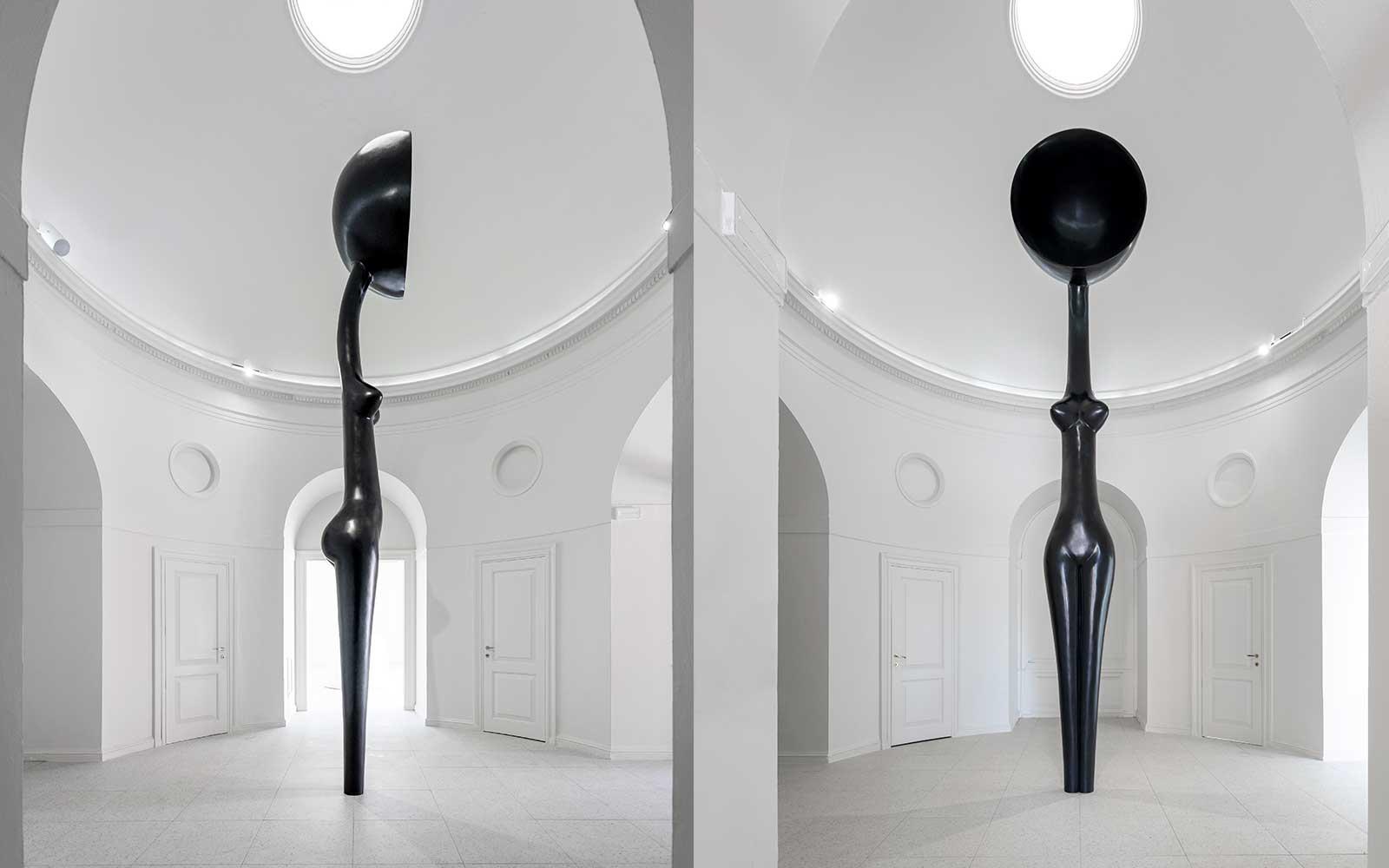Week 2
Whilst the article criticism accompanying the 1935 MoMA exhibition and Simone Leigh's Sovereignty differ hugely in the ways Black art might be constructive to a wider artistic hermeneutic, the intentionality of Leigh's citational practices in her work (perhaps as part of a wider African American cultural practice of Signifyin(g)?) allows for the visual comparison between her work and the first major exhibition of Black art in the USA as part of a broader Black aesthetic.
There are striking both visual and wider aesthetic ideals in the presentation of the "God of War" figure from Dahomey whose artist is anonymous and the work belonging to the private collection of Charles Ratton from Paris, and Leigh's Sentinel.

Both present a figure, the earlier figure made in hammered brass, and Leigh's in bronze, both allows of copper. The material choice is likely informed on Leigh's part by her intentional study of various African craft practices however there is a clear similarity in the presentation of the figures here. Despite Leigh's version being a femme personage and the former being a male and the vast difference in size (Leigh's towering over any human and the former, a 4.5Inch figurine), the shape of the bodies presented are very similar. The poised readiness of both figures is clear with a strong and slender build with various adaptation for the presentation of gender. I read this body language with reference to their titles, both of which refer to a preparation for the exertion of power/authority. This preparation can be read in terms of one of the key values of the LoopHole of Retreat - planning, as well as linked to the various ideas of Sovereignty across the exhibition. Sovereignty linguistically refers to supreme power/authority” as well as “ authority of a state to govern itself or another state.” In both cases, authority, the right to give orders, exert power to effect obedience, is key. In the case of the Dahomey figure, the sovereignty, as the power to exert authority is a paramount quality of his role as the God of War, relating to key ideas of resistance. The parallel authority from Leigh's piece in its title refers to the military role of standing guard, where similarly there is a key implication of an ability to exert power and authority through the piece's name.
I would argue that these expressions of authority are further amplified in other visual features in both pieces. In the case of the Dahomey work, it is the presentation of both cutlasses, at the ready, along with a prominent jaw, very closed eyes and pursed lips. Whilst the appliance of contemporary frameworks to historical pieces can sometimes be ill-assumed, it proves useful to read this facial expression within the context Leigh's original title of this exhibition "Grittin'", as a "protective determinism" as part of citational practice. The prominent jaw aspect physiologically relates to the notion of gritting one's teeth, a saying referring to the determined acceptance of an unpleasant situation. Narrowing of features often accompanies this expression. In Sentinel, Leigh goes so far as to thin these expressions not only into featureless face, but a hollow demisphere. Whilst she describes this decision as a way to highlight the invisibility of Black women’s labour in American society, it functions in a dual way here regarding an expression of determinism so intense by the Black femme subject, it is almost imperceptible. This facial expression, held by many contemporary Black women with a measured composure in the face of deeply unpleasant situations as a function of protection, unperceived by the untrained eye. I would argue that the authoritative aspect of sovereignty is further presented in sentinel through the sheer size of the sculpture, asserting not only its physical power but also, subjective power, to survey and assert its view of the world below. This type of power astutely constitutes the thinking freedom asserted as a key value of the Loophole of Retreat and more widely, the power to decide Truth.
Overall, Sovereignty is a clear example of citational practice, drawing on aesthetics of pre-colonial African art, practices and contemporary references as a work of inserting Black femme subjectivity into common thought. Whilst the article frames her work as a mix of fact, fiction, citation and invention, it is pertinent to note the linguistic overlaps between “story” and “history” in many of the romance languages whereby fact and fiction come together to produce the narrative of Truth which we refer to as “history”, a myriad of Truths co-curated by subjectivities in various power arrangements. By titling her work highlight Black femme subjectivity Sovereignty , Leigh addresses the power stratified power arrangements at play in our contemporary curation of history wherein the Black femme subjectivity demands attention.


Comments
Post a Comment